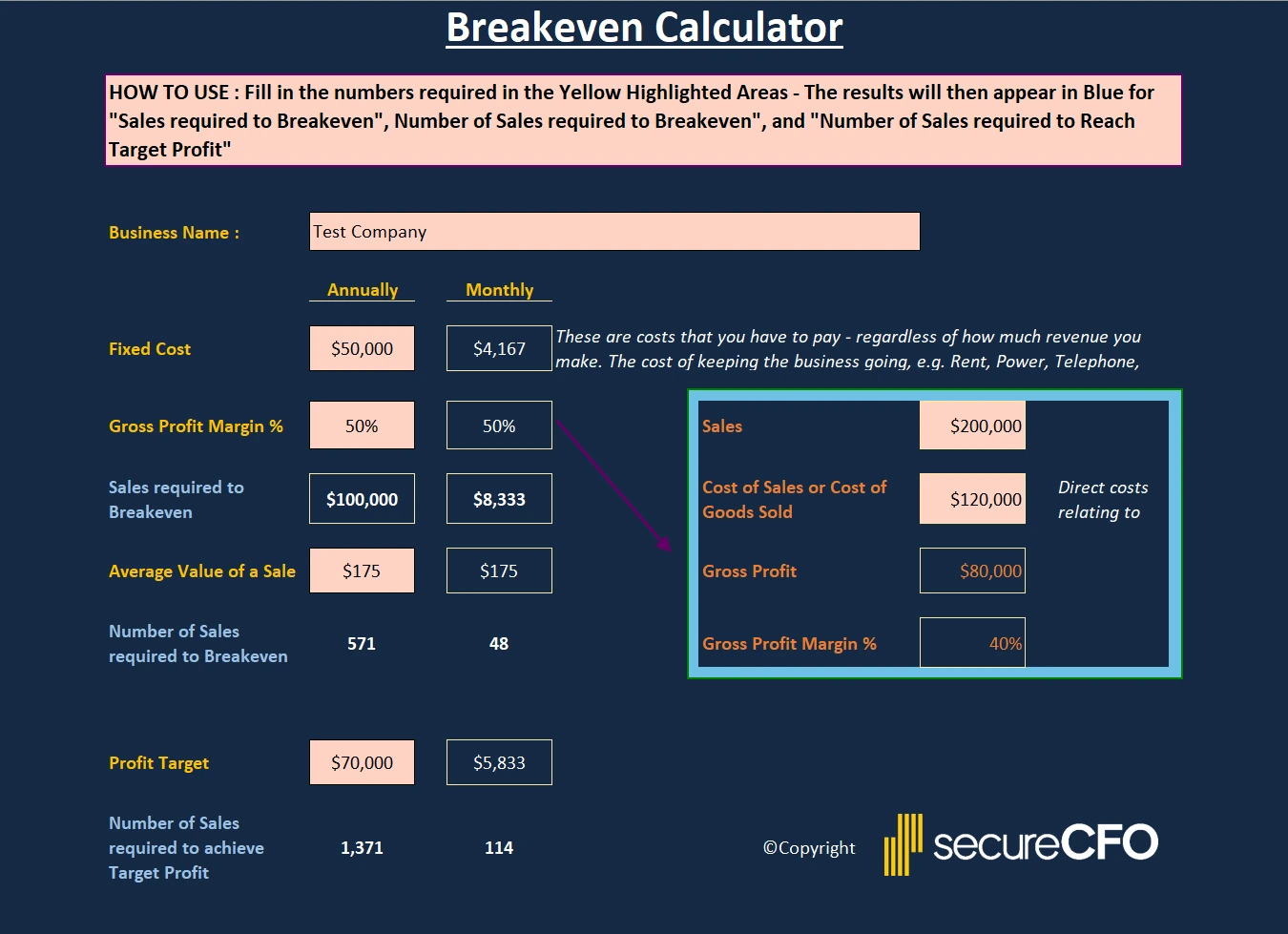HOW TO MEASURE PROFITABILITY IN A SERVICE BASED BUSINESS
HOW TO MEASURE
PROFITABILITY IN A
SERVICE BASED BUSINESS
Having a complete summary of your earnings and expenses as a company will help with planning,
How to measure your profitability in the service industry
The best targets to improve your service-based business are with the 3x model.
The 3x model states that your revenue should be equal to or greater than 3x the salaries you pay your staff.
If you’ve paid the salaries of your staff – $450,000 the revenue provided by your staff needs to be at least $1.35 million. Setting a revenue target based on your salary in the service industry can make sure that your business remains profitable over time and helps you to set up a proper budget for your business.
Another example in service-based businesses.
IT services with a $60,000 salary.
Chargeable rate for service providers of the hundred and $20 per hour excluding taxes.
Hours of work Senate 1800 per year assuming 52 weeks with four weeks of holidays with one week of personal leave and two weeks for public holidays.
A productivity level of 80% would also go into billable hours with 20% of work spent on tasks that are nonbillable.
The expected revenue from a staff member is taken from 1800 hrs. x $120 per hour x 80% to achieve the figure of $172,800.
The week times salary figure estimate that you read venue generated by that professional should be around $180,000 or three times their salary.
How to Measure Profitability: Business income statements:
- Revenue or income in a service-based industry needs to be three times the salary of an employee.
- This accounts for the cost of goods at 1x the salary
- The gross profit for 2x the salary
- Overheads may account for 1 of the x2 of gross profits
- Leaving net profit at 1x the salary for targets
How to Measure Profitability that targets for the 3x model need to be looked at on a regular basis including an isolated approach on a monthly or quarterly basis. Isolating areas of time for performance will ensure that useful comparisons can be made during the lifespan of the service.
Performing these regular reviews of specific periods will make sure that work in progress is billed accurately and target a revenue are met.
WIP or work in progress are the billable hours worked up to a point of time that have not been billed. This is a major asset in businesses when they are forming balance sheets. The movements of the values for WIP need to be tracked regularly. By seeing the movements in work in progress on income statements, we can see areas where a business might improve billable hours or add more accurate billable hours.
Assessing WIP needs to be done on a constant review basis. Clients unlikely the paperwork that was completed 12 months ago on the business needs to assess their performance during each period while understanding and accounting for work in progress. The volatility in performance can be crucial to success.
Examining the results of the 3x model: Asking the right questions.
- What is the revenue multiple (to salaries) of your whole firm?
- What staff sit below the firms average score?
- Are there differences between individuals based off of productivity, write offs, overruns, over quotation etc.?
- What is the multiple of your overheads? What are your three-month averages for overheads in multiples? Which overheads are higher than expected?
- What work in progress is older than three months and why are you slow to invoice it?
How to Measure Profitability: Areas where performance can be tuned.
Quoting:
- Improving accuracy in quoting or putting more thought into quoting will offer better pricing.
- A lack of understanding between service delivers quote givers.
- Products are not being debriefed in a sufficient way an after-the-fact analysis takes place too late.
- Client expectations of service are different from service providers.
Write-offs and downs:
- Billable tasks are written off or written down due to a perceived lack of value provided in the service.
- Load time tasks are written off due to perceived lack of value such as with administrative work.
Productivity:
- Billable hours for staff are less than peers. Systematic issues like lack of training or defined job roles.
- Communication problems persist and expectations are not managed.
Introducing systems that handle the management of these areas for fine-tuning may seem like an extra expense but they will often pay for themselves in the improved productivity and revenue.
As a certified CFO, I bring a robust blend of expertise and accreditation to the table, ensuring that my strategic financial management not only aligns with industry best practices but also drives substantial value and innovation in the services sector. My certification is a testament to my commitment to excellence and my capability to navigate complex financial landscapes effectively, making me a trusted advisor in your journey towards greater profitability and business success.






